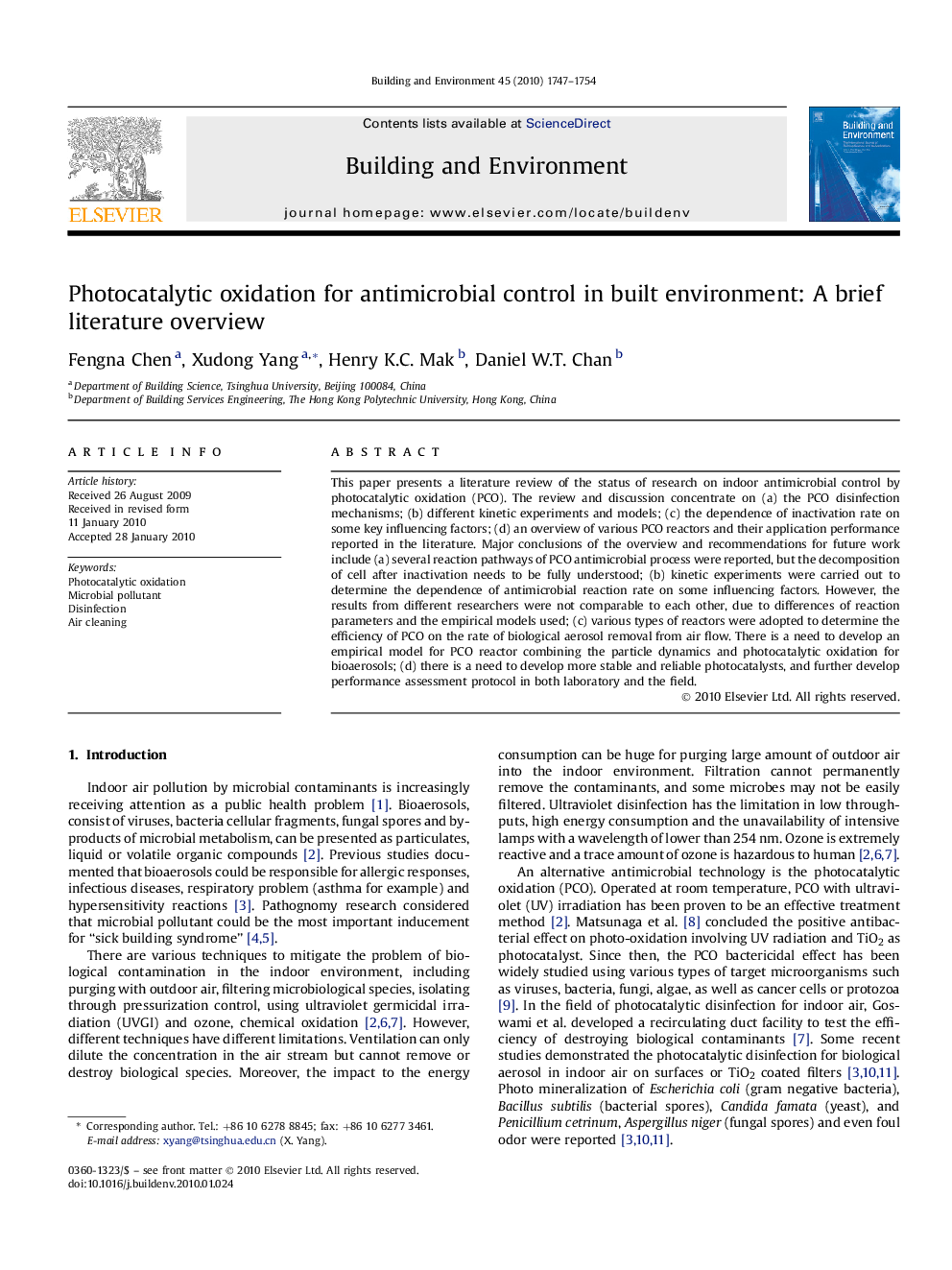| Article ID | Journal | Published Year | Pages | File Type |
|---|---|---|---|---|
| 249019 | Building and Environment | 2010 | 8 Pages |
This paper presents a literature review of the status of research on indoor antimicrobial control by photocatalytic oxidation (PCO). The review and discussion concentrate on (a) the PCO disinfection mechanisms; (b) different kinetic experiments and models; (c) the dependence of inactivation rate on some key influencing factors; (d) an overview of various PCO reactors and their application performance reported in the literature. Major conclusions of the overview and recommendations for future work include (a) several reaction pathways of PCO antimicrobial process were reported, but the decomposition of cell after inactivation needs to be fully understood; (b) kinetic experiments were carried out to determine the dependence of antimicrobial reaction rate on some influencing factors. However, the results from different researchers were not comparable to each other, due to differences of reaction parameters and the empirical models used; (c) various types of reactors were adopted to determine the efficiency of PCO on the rate of biological aerosol removal from air flow. There is a need to develop an empirical model for PCO reactor combining the particle dynamics and photocatalytic oxidation for bioaerosols; (d) there is a need to develop more stable and reliable photocatalysts, and further develop performance assessment protocol in both laboratory and the field.
